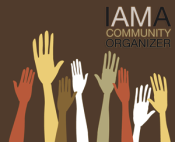 |
| Why are police so quick to absolve potential co-defendants of criminal responsibility? |
However, in the Deryl Dedmon case, which I've discussed before, in terms of color-aroused violence, if a Black person or persons did what Dedmon and his friends did, then that Black person or persons would get the death penalty. There is absolutely no way that any participant present at the scene of the crime would be charged only with "assault."
However, I predict that Dedmon will not get the death penalty, much less his friends, because his skin is white and the skin of his victim is brown, and that is color-aroused injustice at work. It will depend, in large part, on the skin color of the jury, but even Black people have been taught to believe that a white life is more valuable than a Black one. Meanwhile, the Black prosecutor cannot be seen to be overly aggressive in this case, because he works in Mississippi. He might win the case in the national jury of public opinion while alienating his (all-white?) jury in Jackson, Mississippi.
I hear excuses being made by a police detective for Dedmond's friend who traveled with him, but there is no way a police detective would offer these excuses if the killer were Black and the victim were white. I can't remember seeing a case in which a police detective in one jurisdiction made statements that tended to lessen the possible criminal consequences of a defendant in another jurisdiction. Detectives are all on the same team, unless the prosecutor is Black and the perpetrators are white.
Moreover, even if Dedmond's friend wasn't present for the run-over, he can and should be charged with conspiracy to commit murder (there was an agreement when they began their trip and murder was a foreseeable result) and attempted murder (Dedmon's friend beat the victim) as well as murder (Dedmon's friend actively engaged in a concerted effort which ended in the foreseeable death of the victim.
The friend is known to have inflicted injuries that might have killed the victim even if the victim had not been run over. That's attempted murder, and the collusion with the murderer to effectuate the beating makes it murder outright. I think we can all agree that it wasn't necessary for Dedmon to run over the victim with a pick-up truck in order for the victim to die, as the result of a beating that both Dedmon and his friend engaged in.
A conspiracy is committed at the time of the agreement to commit a crime. Since the agreement is the crime, it doesn't matter whether someone who agreed and took steps in furtherance of the conspiracy later changed his mind, e.g. because he had to go to the bathroom, and was therefore not present when the conspiracy ended in the goal that was intended. All conspirators are guilty of conspiracy, even if some of them are in Australia when the conspiratorial goal, or the likely result of the goal, is "achieved."
It was likely that two or more people young adults beating one middle-aged man, over and over again, would result in murder, and people are legally responsible for the foreseeable results of their behavior.
A lot of white people took part in the conspiracy, agreeing on the demographic group of the victim and where the victim could be found, and that the crime should be committed right away. ALL of those people are chargeable with conspiracy because the all collaborated and colluded in the agreement to do an act which none of them might have done without the encouragement of the others. The fact that the police haven't released the names of these other individuals and that their criminal responsibility has been ruled out is yet another example of color-aroused injustice.
If the victim had been white and the conspirators Black, all of them would have been charged with murder and then one of them might get life imprisonment instead of the death penalty in exchange for testimony against Dedmon and the friends who were with him.
This case helps explain why Haley Barbour decided not to run for president. He had too many skeletons already and there was always the risk that something like this would happen when he was the nominated candidate and would be besmirched nationally, even if this murder was celebrated by whites in Mississippi.





